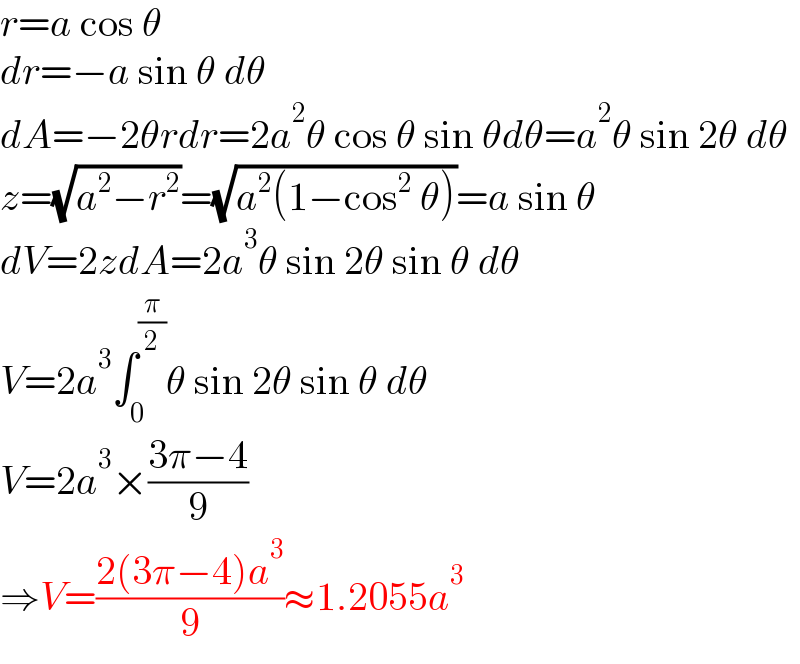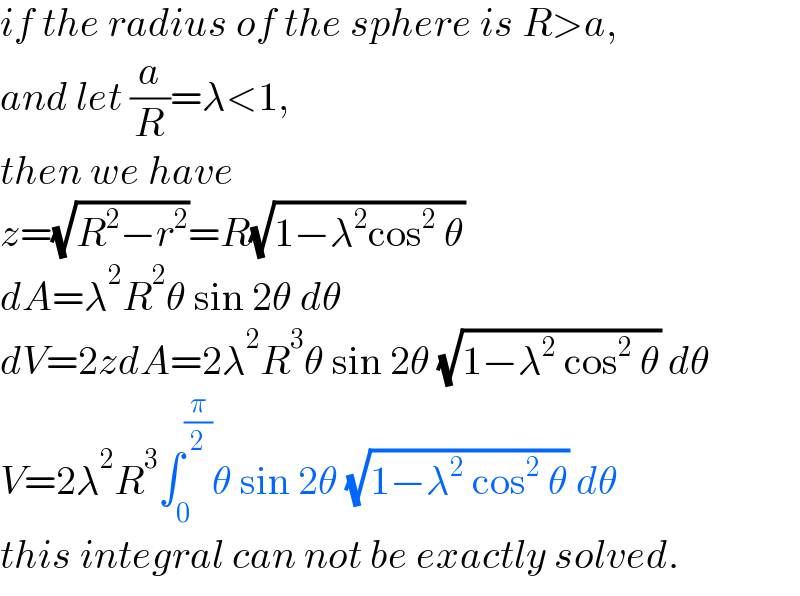
Question and Answers Forum
Question Number 183165 by universe last updated on 21/Dec/22

Answered by mr W last updated on 22/Dec/22

Commented by mr W last updated on 21/Dec/22

Commented by universe last updated on 22/Dec/22

Commented by mr W last updated on 22/Dec/22

